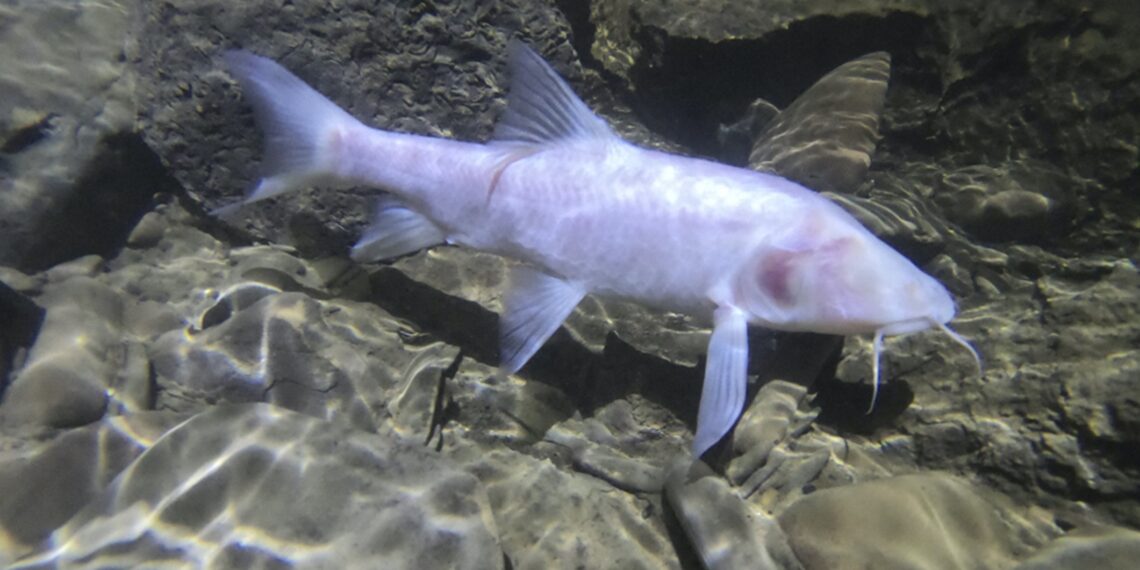Shillong: The Neolissochilus pnar, the largest known cavefish in Meghalaya, has been designated as India’s inaugural “National Cave Animal of the Year.”
This unique species was first identified in the caves of Krem Um Ladaw and Krem Chympe, located in Meghalaya’s East Jaintia Hills, during expeditions in 2019 and 2020.
Its name pays homage to the Pnar community, a sub-tribe of the Khasi people, acknowledging their deep cultural and ecological ties to the region.
The declaration was made by the Speleological Association of India (SAI), the national affiliate of the International Union of Speleology (UIS).
This initiative, part of a newly launched campaign, seeks to bring attention to India’s distinct subterranean biodiversity.
By selecting a National Cave Animal each year, the program aims to emphasise the ecological importance of caves and advocate for their conservation.
“This extraordinary cavefish highlights the hidden biodiversity within India’s caves,” stated the SAI.
“Our initiative underscores the need to protect cave-dwelling species and preserve these fragile ecosystems for future generations.”
Adapted to life in perpetual darkness, the cavefish exhibits typical traits of subterranean species, such as the absence of pigmentation and reduced or missing eyes.
ALSO READ: Meghalaya: Youth stabbed in the eye and ribs; accused on the run
The species thrives in the vertical cave systems of Krem Um Ladaw, characterised by rocky floors and stagnant water pools, and the horizontal river cave of Krem Chympe, known for its expansive tunnels and waterfalls.
The species was formally described by a team of researchers.
As a non-profit focused on cave and karst ecosystem preservation, the SAI aims to use the “Cave Animal of the Year” campaign to promote scientific research and raise public awareness about India’s often-overlooked underground ecosystems, which are critical to biodiversity and environmental health.















